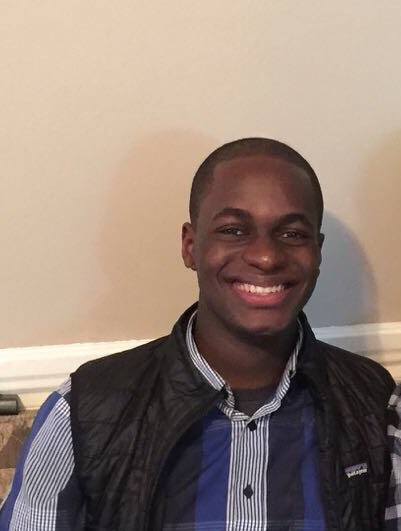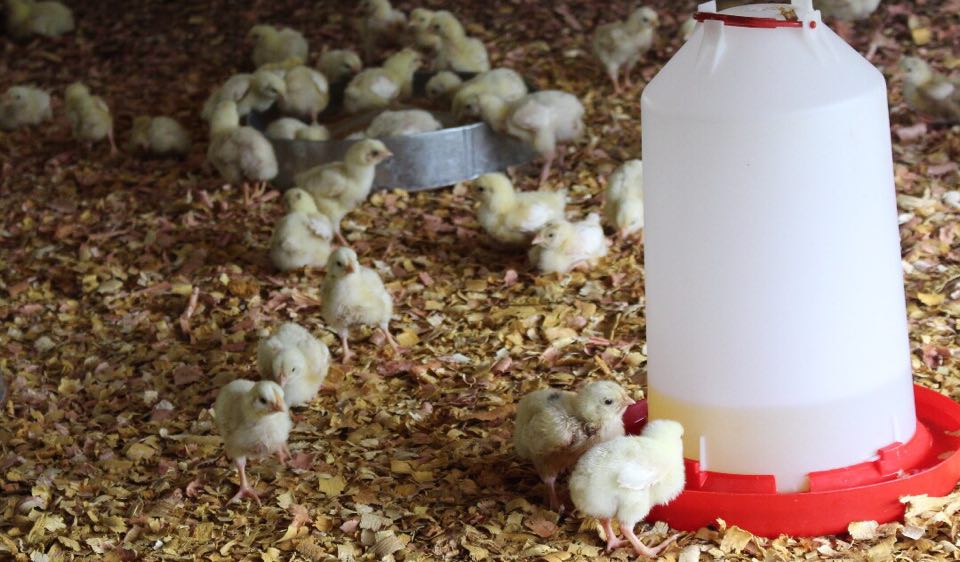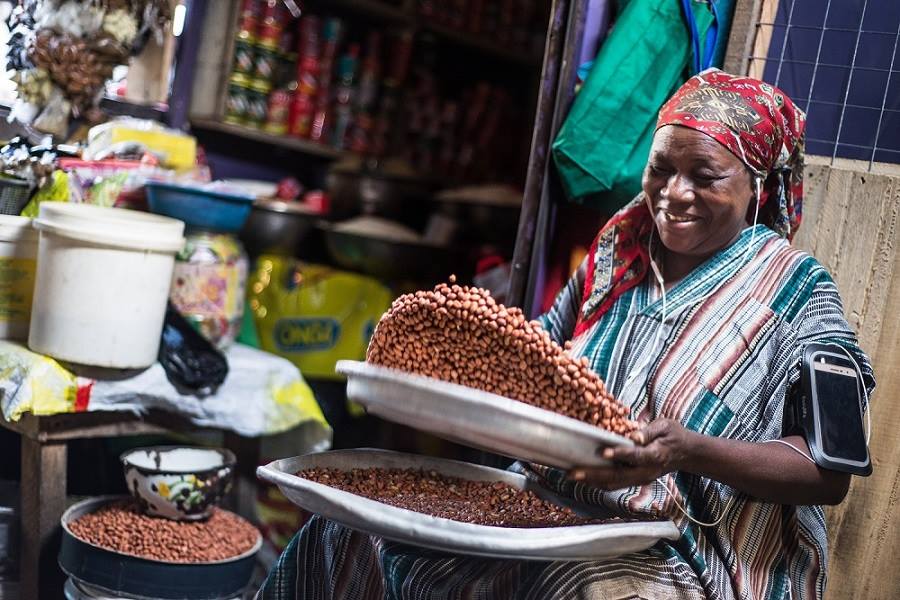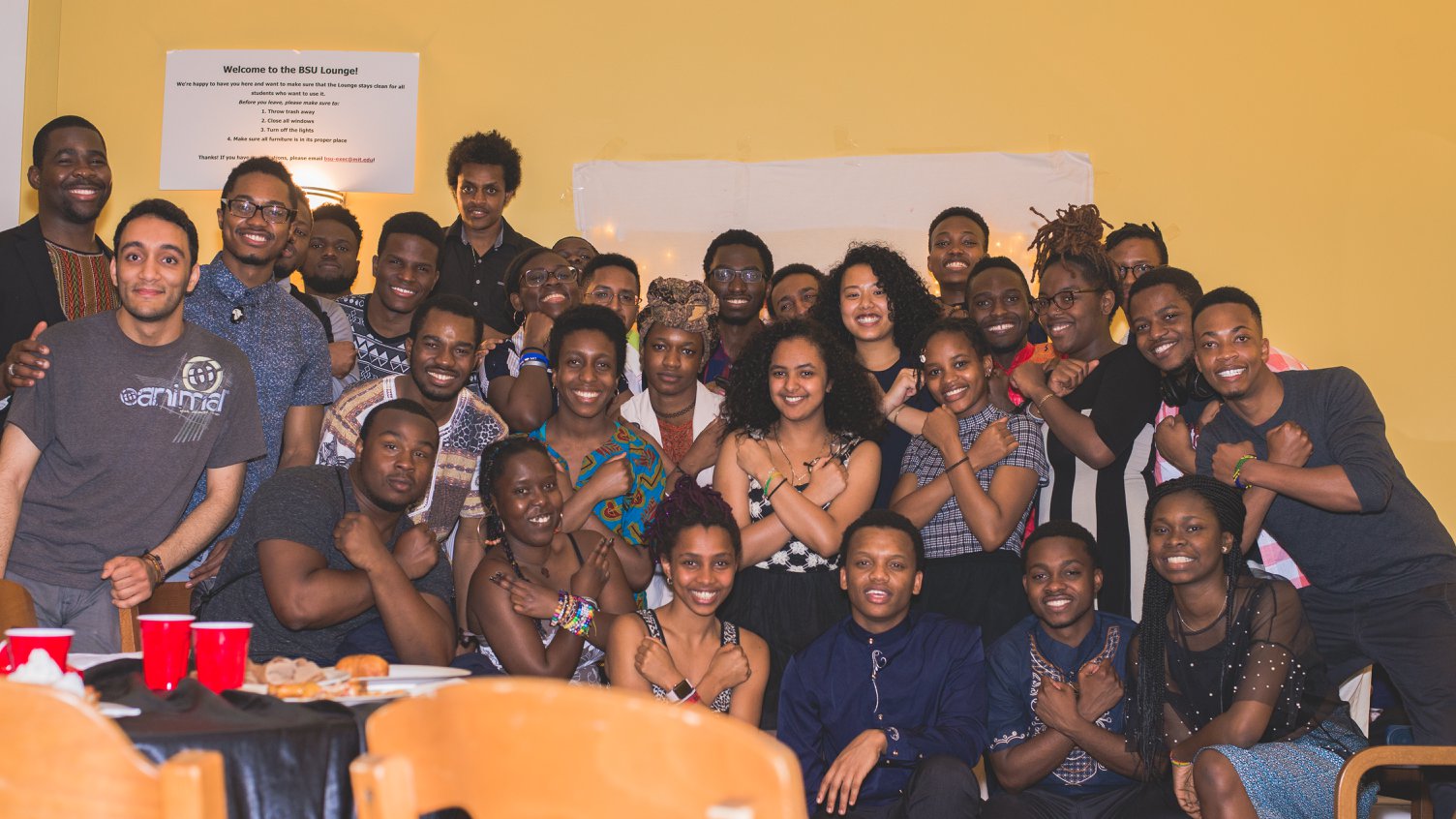Africans@MIT: Blockchain and the Niger Delta by Selam G. '18
Creating a system for accountability
Hassan, Sela, and the Niger Delta

Hassan K. ‘17 is my friend and former classmate. He graduated last year (as the ‘17 suggests). When at MIT, Hassan (who is from the Ivory Coast) was always highly active in the Muslim and African communities on campus, and would also be a big part of student entrepreneurship clubs and organizations. In addition to taking on roles to revamp the African Students’ Association, he was one of the first students to participate in MIT’s Sandbox initiative. Working with Sandbox staff, Hassan founded a “Hacker House” in San Francisco during the summer of 2016, where he and other MIT students worked on interesting startup ideas and research.
Hassan embodies the spirit of risk-taking and acting on bold ideas that I find MIT instills in students so well. His Hacker House ideas didn’t pan out, but Hassan’s sophomore summer, he interned at Facebook. Unlike many college students–which might take their intern savings to simply use for their next year at college or spend on themselves–Hassan took his paychecks and worked with his high school friends and family members to start a chicken farm in his home country, the Ivory Coast. This farm has now grown into an agriculture technology startup involved in poultry farming, agricultural consulting, and even streamlining drone access to farmers.

I asked Hassan for pictures of the chicken farm and hE SEnT ME THIS (!!!!!) too cute.
I had heard from the rest of the African community that Hassan got involved in some really interesting work after graduating (aside from the chicken farm!) and reached out to him for this series.
We spoke over a video call, from Boston to Lagos.
“I just wanted you to see how strong the connection is in Nigeria!” he told me, and laughed. The last I had heard from him, Hassan had been in New York, so I asked him why, exactly, he was now in Lagos.
After graduating, Hassan had interned for a summer at Uber ATG (Advanced Technologies Group) which is primarily Uber’s driverless car initiative. He was supposed to go to the African Leadership University for a program in the fall and then return to MIT for an MEng in Course 6 (EECS), but one day met Chi Nnadi, the founder and CEO of Sela.
Sela is a technology company born out of Chi Nnadi’s experience performing a project focused on cleaning up the Niger Delta, which many associate with its long history of oil spills and environmental damage inflicted by Shell and other oil corporations. The spill scandals were widely reported on years ago, but associated effects are still very present, and affect the lives of people in the area today.

Hassan (right) and Stanley Opara, Director of Partnerships, at a Blockchain conference
When Chi went to perform an oil cleanup project in a relatively remote area, the difficulties of hiring others to perform tasks became apparent. The difficulties he encountered on the ground often involved opaque funding management. There was very little visibility into when exactly funds were transferred to contractors, or when contractors were supposed to start projects. As a result, whenever there was no progress, it was unclear which party was at fault. Did the federal agencies who received the funds not transfer them to the contractors? Did the contractors who received the funds pocket them? When were projects to start? All this information remained siloed within organizations, creating a lack of accountability.
After encountering this accountability problem, Chi was inspired to try building a method to ensure the safety of his own projects, one that could be useful for many other projects, too. Sela was born, and aims to take advantage of a key development: the now widespread penetration of mobile technology and connectivity in rural regions.
Hassan became excited about Sela’s mission after speaking with Chi, and decided to join Sela in the fall as CTO. That was how he got to New York, where Sela is headquartered, and worked on using cutting-edge technology to build accountability infrastructure.
Accountability Infrastructure
“The thesis of our project is that corruption is about the system,” Hassan tells me.
When Hassan says that the “thesis” is to target “the system”, what that means is that corruption is not tied to individuals, or politicians, or particular agencies. It’s really tied to a lack of infrastructure–a bit different from roads or water pipelines, but infrastructure all the same. Where there is not a good infrastructure for accountability, corruption arises–people will absent-mindedly pocket funds meant for a project (such as cleaning up the Niger Delta), or claim that materials were “more expensive” than expected and make budgeting difficult.

One example of now wide-spread mobile phone use.
An important element of an accountability infrastructure involves clear, transparent documentation of the actions that need to be taken, the people responsible for these actions, and the real-time status of an ongoing project. Up until very recently, having a real-time pulse of the projects on the ground was difficult. 10-15 years ago when phones or computers weren’t as present, collecting and processing that data in real time was very difficult, and the process involved frequent in-person inspections and visits, formally collecting information in a report. While this manner of capturing this data is a good first step, it can easily lead to long delays–the inspections must be conducted, a report created, a report sent to higher officials or managers and finally, a decision made. Inconsistencies could occur between different agency’s reports, and at each step of reporting upward, visibility into what’s actually happening on the ground decreases–how can you make sure that the report reaching the prime minister hasn’t been modified on its way through various agencies? This structure can easily create disconnects and information asymmetries that foster corruption. Without a shared truth or a common base of information, fraud and lack of accountability can creep up.
Connectivity leads to the flow of information, and collective communication gives rural communities a stronger voice. As Hassan puts it, that voice can be as simple as the ability to respond to questions, such as, “Hey, I read that a hospital in your community has started construction. Is this true?” Before the spread of mobile technology, outside organizations simply had to trust public reports on these regions, which may be less specific or informative.
So how do you build an infrastructure for accountability that is not dependent on a central enforcement agency?
Decentralize it.
The Sela Framework
Sela defines 3 primary actors in a given project. There’s the project funder, which is the provider of the source of capital, such as a nonprofit, a private person or company, the government, etc. Then, there is a contractor, the executor of the project–a person or company hired to build a well, for example. Lastly, there are community members, members of the community where a given project is implemented.
Sela’s platform objectives involve creating a network between the project funder, contractor, and community members. The contractor and project funder enter a contractual agreement for how the work is to be executed, and the project funder may decide a payment release plan–releasing payments only after a certain body of work has successfully been completed.
To determine whether a part of the work has been completed is usually difficult–especially when project funders might be in other countries, or unable to be physically present to appraise the progress. In lieu of the project funder, trained community members act as observers. Through a system that Sela designed, a community member can send text or photo updates of the progress–taking photos of the work completed, for example, or answering project-specific questions by talking to a chatbot. Sela has even considered involving illiterate community members by using voice-first interfaces –similar to when you call a bank and “Press 1 for English”, the community member could answer questions in some system of pressing 1 for “yes” or 2 for “no”. This system explicitly takes advantage of the now widespread mobile phone use in even rural regions of most African countries. The teenagers in my own family in rural Ethiopia almost all have their own cell phones, for example, and charge them using solar-powered batteries.
Multiple community members are trained observers, none of the observers know which other community members may be observers, and no observers have any relationship with the contractor. Establishing this redundancy makes it easy to check if there are any discrepancies between the reports of different observers, and act accordingly if something looks fishy. Over time, contractors themselves could build up reputation this way (similar to lots of 5-star ratings on Amazon or Airbnb) after successfully completing multiple projects without issues.
In this way, there’s no need for a central agency. It’s instead decentralized–all the different actors, rather than a central third party agency, hold each other accountable. The project funder holds the contractor accountable through the community observers. The contractor can now hold the project funder accountable, too, to the payments specified, and need not be afraid of being unpaid for work done well. And the community observers each hold each other, the project funder, and the contractor truthful, incentivized both by the fact that this project is happening within their own community, and also payment.
Blockchain and Smart Contracts
“So where does the blockchain come in?” I asked Hassan, because I had heard this buzzword associated with his name and company often.
Hassan laughed, “I didn’t mention that until now because I wanted to explain to you what we do first. We’re in an area where the tech is overemphasized, but I wanted to emphasize the problem we solve first–now I’ll explain the technology!”
Sela plans to pay community observers a small amount for each of their observations, to incentivize observers. The observers are paid for every truthful response, even if the truth is sometimes ‘this work was not completed’. Having a payment system also allows Sela to use blockchain technology, where payments take place via virtual wallets and using virtual currency (similar to Bitcoin, which also runs on the blockchain platform). A physical station in the project region will be set up where observers can exchange virtual coins for cash, and be paid this way. The payments between the project funder and contractor will then also be handled with virtual wallets and coins, and each payment is conditional on meeting agreed milestones. Every transaction between all of these parties can be recorded on the blockchain ledger.
So what is “Blockchain”? I appreciate how Hassan recognizes that this is indeed an often over-emphasized buzzword, and prefers to instead focus on the accountability problem Sela tries to solve. But for those of you that have maybe heard of this word in the news or on the internet without much exposure, here’s a brief explanation.
The blockchain is not really a “thing”, as it’s more defined by connections between things. It’s therefore difficult to describe (this is why I’m Course 2/Mechanical Engineering lol). Let me challenge something you might think you know well, or at least better than blockchain: what is the internet?
The internet is also not a “thing”. It is a series of connections between things. Companies (like Comcast) set up literal wires, buried in the ground, connecting computers and servers to each other, and allow data to be transmitted across those wires. Sometimes there are “wireless” connections, like data transmitted via cell tower to our phones, or via satellite. It would be virtually impossible to take down the internet, because to truly take down the entire internet would mean destroying all connections to all computers and servers in the whole world. The internet also has protocols–“http” is our modern-day standard–that establish how all nodes should “talk” to each other, so that information doesn’t end up being sent to the wrong place or in a jumbled format.
Blockchain can also be thought of as a connection protocol, and has even been called “a new type of internet”. When all the nodes in a network follow a blockchain protocol, the effects of using it are that data can be distributed, but never destroyed. This way, any transaction that occurs has a permanent record, and there are no questions as to “what actually happened”. If all the transactions related to a particular project occurs on the blockchain, there will always be a record of what happened. A project funder and contractor initiate a smart contract, which is a feature of blockchain that can be programmed to perform simple functions, such as releasing a payment once a project milestone is marked complete by community observers and approved by the project funder.
Of course, the gritty technical details are difficult to actually perform and manage, so that is why Sela is trying to create a user-friendly platform, where the actual framework of blockchain is mostly hidden from the users. The project funder, contractor, and community observers can then all operate via verification questions and written agreements, just like the normal legal contracts we have today, and the rest is handled by Sela’s framework.
Hassan emphasizes that Sela is still very much an early stage initiative, and they see advantages to rolling out their framework in a gradual fashion. Rather than telling those creating and affected by projects to change almost all of their typical workflow, Hassan sees a step-by-step introduction to their technology as a more sustainable method.
Our Modern Continent
Sela has been given many votes of confidence as they build their platform. Hassan told me about their talks with different Nigerian federal agencies, who may be interested in adopting their work if successful. As I’m writing this post, Sela is testing their initial framework already.
My conversation with Hassan reminded me a lot of, again, the recurring theme of Africans@MIT, where today’s successful expatriates or diaspora feel a powerful desire to help African communities in whatever way they can. Many modern governments in African nations have only been around for ~50 years or less, and this means racing to catch up after so much disastrous interference. What I’ve been amazed at is the speed they’re all running–African nations skipped the landline and went straight to cell phones, part of the reason Sela’s work is possible now. With their continued work, we might even see some of the first government-sponsored adoption of blockchain technology, and potentially, a way to “skip” the inefficiencies in many established, bureaucratic central enforcement agencies, too.
Hassan feels this too, the exciting pulse of many modern African countries.
“Entrepreneurship in Africa is so interesting!” Hassan told me, “it feels like the activation energy for starting projects has been lowered a lot. And the new generation is so much more connected with the adoption of social media and technology. Just sending money, even, is so much easier, better, smoother than before. I was so inspired by Chi because I saw how he was already plugged into the system, had a real career and contacts and a network. The more people we have like this, the easier it makes it for the next interested, entrepreneurial people that meet them.”
Many of us, Africans at MIT, have this sense that Africans are more politically active, entrepreneurial, and innovative than ever. Barriers for intracontinental cooperation are slowly being worked on–different trade-block and single-passport initiatives by the African Union, for example. The problems are visible, yes, but so much is happening, for and by Africans, to try and address them. Some media outlets will always read this as driven by desperation, or China, or worse, not recognize the tremendous amount of progress altogether. But I hope this series might have given you a little more insight, to see more than a single story about our modern continent.

Since this is my last post in the series, I just wanted to share a goofy photo from the African Students Association’s Senior Night event. There are so many more incredible people and stories I didn’t profile!
P.S.–in the time I took to write and post this, Hassan himself wrote a great update on Sela’s Medium blog, “Beyond Protocol”, about their progress so far! You can read it here, and to learn more about Sela, you can visit their website.
P.P.S.–The African Students’ Association is starting its own blog on Medium! Not much is up yet at the time of posting this, but you can find it here if you want more content like this.